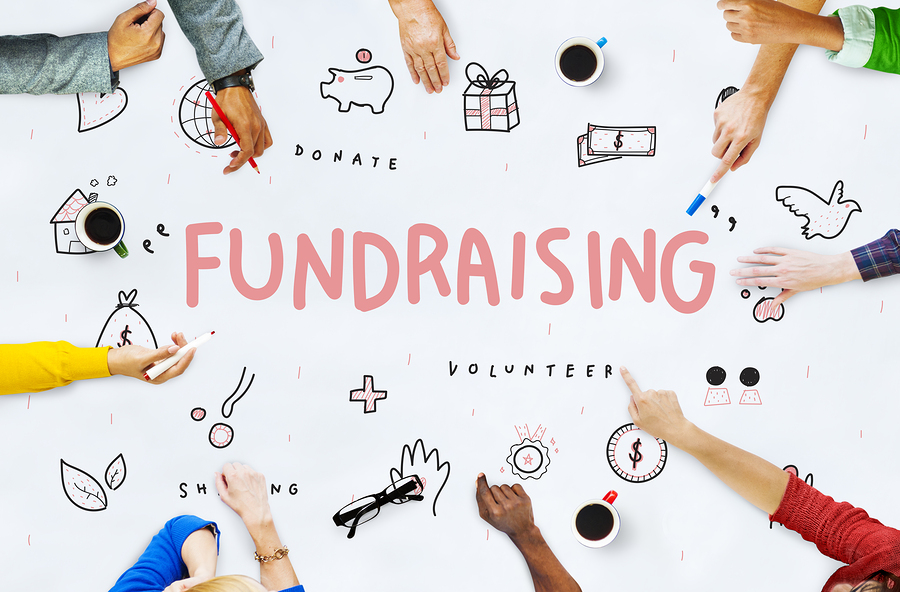Fundraising Consultant: Specialist Assistance to Enhance Your Nonprofit's Fundraising
The Function of Community Interaction in Nonprofit Fundraising: Building Lasting Relationships for Lasting Support
Community interaction is significantly recognized as an important element of successful not-for-profit fundraising. The approaches and approaches used to engage areas vary extensively, increasing crucial questions about efficiency and influence.
Comprehending Area Involvement
Neighborhood engagement is a crucial part of effective nonprofit fundraising efforts. It describes the approaches and tasks that organizations use to get in touch with their regional areas, fostering relationships that are mutually beneficial. Understanding area involvement entails identifying its complex nature, that includes partnership, participation, and outreach. Nonprofits need to determine essential stakeholders-- such as community members, local organizations, and various other organizations-- to produce reliable interaction techniques.
Reliable community involvement is asserted on energetic listening and responsiveness to the requirements and passions of the neighborhood. This process includes obtaining feedback, understanding neighborhood dynamics, and making sure that the company's goal straightens with local top priorities. Engaging the neighborhood can take various types, consisting of public meetings, volunteer chances, and partnership efforts, each designed to encourage participation and investment in the company's objectives.
Additionally, neighborhood engagement must be come close to as an ongoing dialogue as opposed to a single effort. By promoting a comprehensive atmosphere where community voices are heard and valued, nonprofits can build a strong structure for future fundraising ventures. Inevitably, a deep understanding of community engagement equips organizations to develop genuine links that boost their overall performance and sustainability.
Advantages of Solid Relationships
Strong connections formed through neighborhood engagement yield countless benefits for not-for-profit fundraising efforts. Firstly, these relationships foster count on and reliability, crucial elements in encouraging contributors to contribute. When potential advocates see a not-for-profit actively included in their neighborhood, they are more probable to count on its mission and effect.

Furthermore, these relationships assist in effective interaction. Nonprofits can utilize their links to share tales of impact, updates, and needs, guaranteeing that advocates remain enlightened and engaged. This open line of communication not only strengthens bonds yet likewise urges word-of-mouth promo, broadening the not-for-profit's reach.
Finally, solid neighborhood connections can draw in brand-new companions and enrollers. Companies and people are much more inclined to line up with companies that show purposeful community participation, providing additional resources and support that can considerably improve fundraising capabilities. Thus, cultivating durable relationships through neighborhood interaction is important to a nonprofit's long-lasting fundraising success.
Approaches for Effective Involvement
Exactly how can nonprofits properly involve their neighborhoods to enhance fundraising initiatives? Routine updates, involving content, and calls-to-action can galvanize community passion and participation.
Second, organizing community occasions, such as workshops, volunteer possibilities, or fundraising drives, facilitates in person communication, enabling nonprofits to display their influence and efforts. These events not click here to find out more only elevate funds yet likewise grow connections and permit neighborhood members to engage directly with the reason.
Third, executing customized interaction techniques can enhance interaction. Tailoring messages to particular benefactor sectors based upon interests and previous payments fosters a feeling of belonging and investment in the company's mission.
Lastly, creating partnerships with neighborhood companies and community leaders can magnify outreach efforts. Collaborative initiatives can improve presence and integrity, demonstrating a collective dedication to the area's well-being. By incorporating these strategies, nonprofits can develop long-term relationships that enhance fundraising initiatives and drive sustainable support.
Determining Engagement Success
While engaging the area is vital for successful nonprofit fundraising, gauging the performance of these engagement efforts is similarly vital. Establishing clear metrics enables companies to assess how well they are linking with their target market and achieving their fundraising goals. Secret performance signs (KPIs) such as donor retention prices, volunteer engagement levels, and interaction on social networks platforms provide tangible data for assessment.

Frequently analyzing these metrics makes it possible for companies to pivot their strategies when essential, guaranteeing that community involvement stays straightened with their general goal. Additionally, sharing these outcomes with stakeholders cultivates transparency and constructs trust, motivating additional neighborhood involvement. Eventually, a durable dimension framework not just informs future fundraising campaigns but likewise strengthens the connection in between the nonprofit and its advocates, laying the foundation for sustainable success.
Study in Neighborhood Influence
Various instance research studies highlight the extensive impact that community involvement can have on nonprofit fundraising success. One a knockout post remarkable instance is the "Something to chew on" campaign, where a neighborhood food bank partnered with colleges and services to host neighborhood suppers. These occasions not just raised funds yet also promoted a sense of belonging among individuals, significantly enhancing contributor retention prices.
Another compelling case is the "Eco-friendly Spaces Job," which entailed local residents in the revitalization of urban parks. This initiative not only gathered financial backing from neighborhood organizations but also grew a volunteer base that contributed to ongoing maintenance and programs. The feeling of ownership and pride among community participants converted into continual payments.
In the realm of arts, the "Art for All" campaign efficiently engaged local musicians and clients to develop collective art installments, resulting in enhanced visibility Web Site and donations for a local arts nonprofit.
These instances highlight that when nonprofits focus on neighborhood participation, they can develop lasting partnerships that improve fundraising efforts, making certain sustainable assistance and promoting a dynamic community society. Such situations show that community engagement is not merely a method but a crucial pillar of not-for-profit success.
Final Thought
In conclusion, community involvement is essential to the success of not-for-profit fundraising efforts. Eventually, a durable foundation of area support not just enhances fundraising potential however likewise cultivates a culture of cooperation, vital for achieving long-term business objectives and sustaining purposeful influence. fundraising consultant.
Nonprofits need to recognize essential stakeholders-- such as community members, regional businesses, and various other companies-- to create reliable engagement methods.

In final thought, area involvement is essential to the success of nonprofit fundraising efforts.